Do Peas Need a Trellis?
Fresh, delicious peas! These cool weather beauties will definitely grow best with a trellis. Here are 3 reasons why.
Peas are a crop that you can grow in cool weather, which means early spring and again fall. (If you’re reading this in the summer, consider planting some peas for fall in mid to late August. They can survive a light frost.) They are a great crop to plant at the beginning and the end of your season.
I recommend trellising them for three reasons.
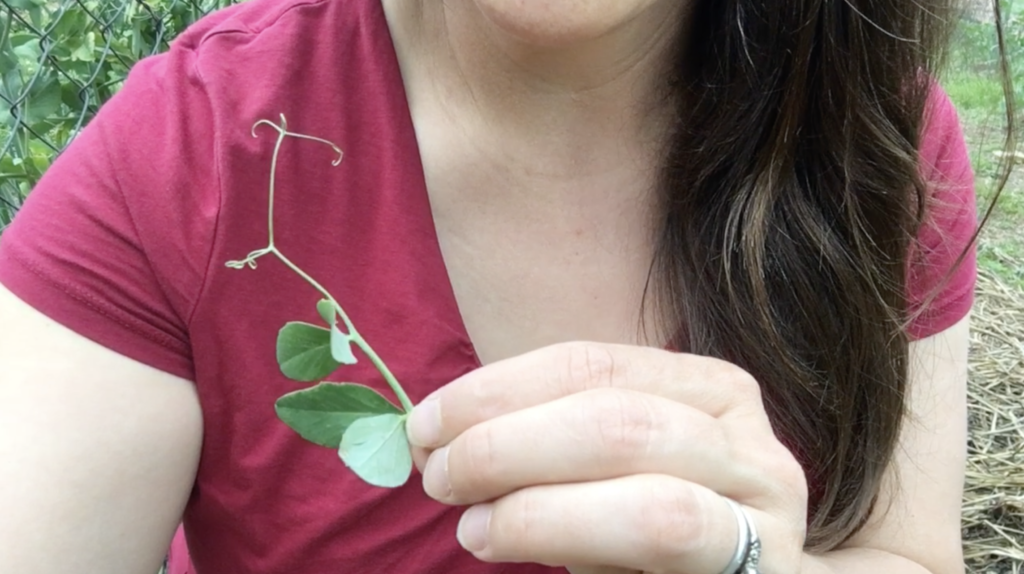
Peas need a trellis for climbing.
Peas are adapted to climb with beautiful little tendrils. They’re modified leaflets and one of the things I love most about peas!
While some plants like trees have woody tissues to hold them up, other plants climb on other structures (and woody plants) to get vertical. Some of these vines have tendrils (peas, passionvine, cucumbers). Others wrap around things with the main stem.
Since peas have evolved to climb and ramble up over other vegetation, we often will give them support — trellises — to climb in the garden.
Trellises can be simple and created from materials you have around. We use chainlink fencing sections that someone gave us. Remesh, welded wire, or chicken wire will work. You could even use string attached to wooden or bamboo stakes.
For peas, use material with vertical and horizontal supports. (For beans, the vertical lines are more important.) Pea tendrils move…very slowly…in a circular motion.
The youngest pea shoots have a single tendril that searches for support. When its hooked end touches something, it starts to wrap.
After the first tendril attaches, the pea grows multi-pronged support tendrils. All the better to stay upright on windy days!
As a bonus, the tendrils, flowers, and shoots of garden peas (Pisum sativum) are all edible.
(One note of caution – the sweet pea flower, Lathyrus odoratus, is toxic if eaten in large quantities or over a long time period. Seed packs will include the Latin name, and sweet pea flowers have been bred for showy, ornamental flowers. Still be sure you know the difference before you nibble!)
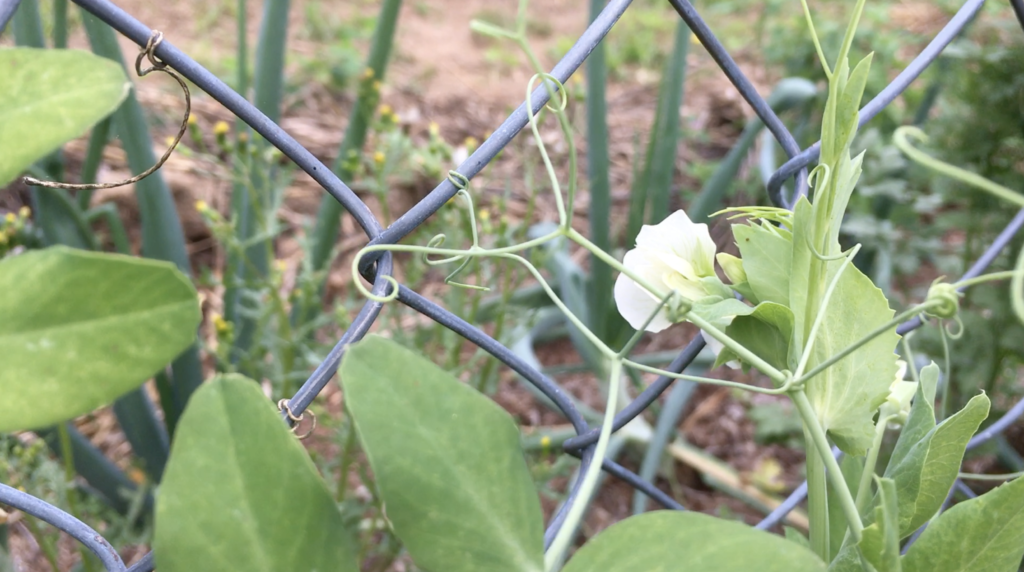
Trellised peas tend to be healthier.
Some peas are bush varieties. They’ve been bred to stay small and only grow 2-3 feet tall. They can still benefit from a trellis. In a side-by-side comparison, our trellised “bush-type” peas had fewer disease and pest issues and produced more fruit than the ones I grew without a trellis.
The peas above were planted on the same day with the same spacing.
Trellised ones had plenty of room to grow and plenty of sunlight — the key to energy for producing lots of tasty seedpods.
If you’re growing the vining peas, they can get 4-8 feet tall. They will definitely grow best with a trellis to climb.
Vertical Gardening is one of the upcoming monthly themes in our Gardens That Matter membership. Click here to learn more.
Peas are easier to harvest from a trellis.
When you have peas off the ground, up on a trellis, it’s going to be easier to find all those sweet little pea pods. Picking peas is a great activity for kids, too.
You can pick them early (snap and snow varieties) and eat them pod-and-all right from the vine. Yum!
When the pods get a little tough, let them finish developing into shelling peas and pick them all at once.
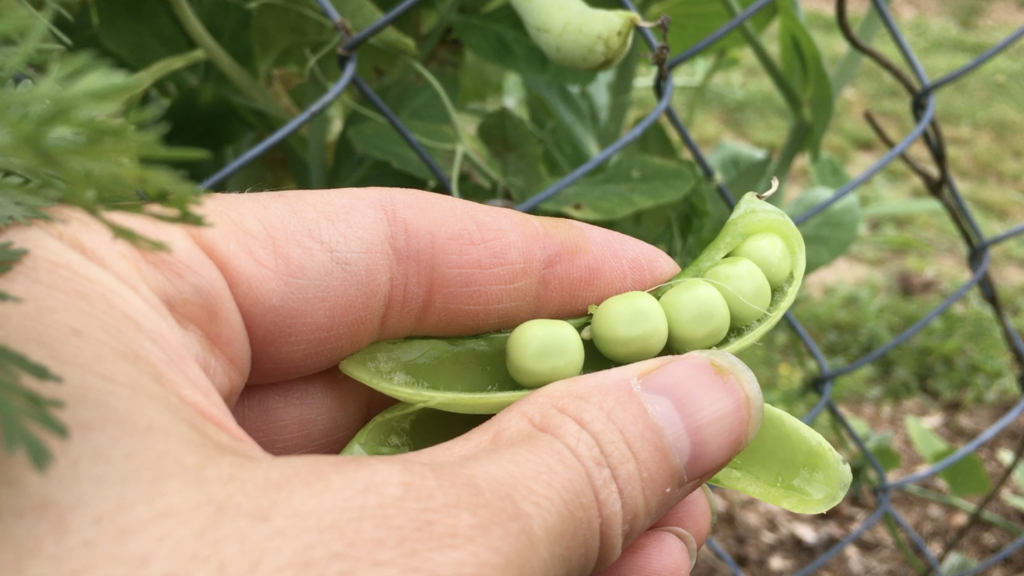
Your turn!
Do you have favorite ways to trellis peas? Tell about your experiences in the comments!

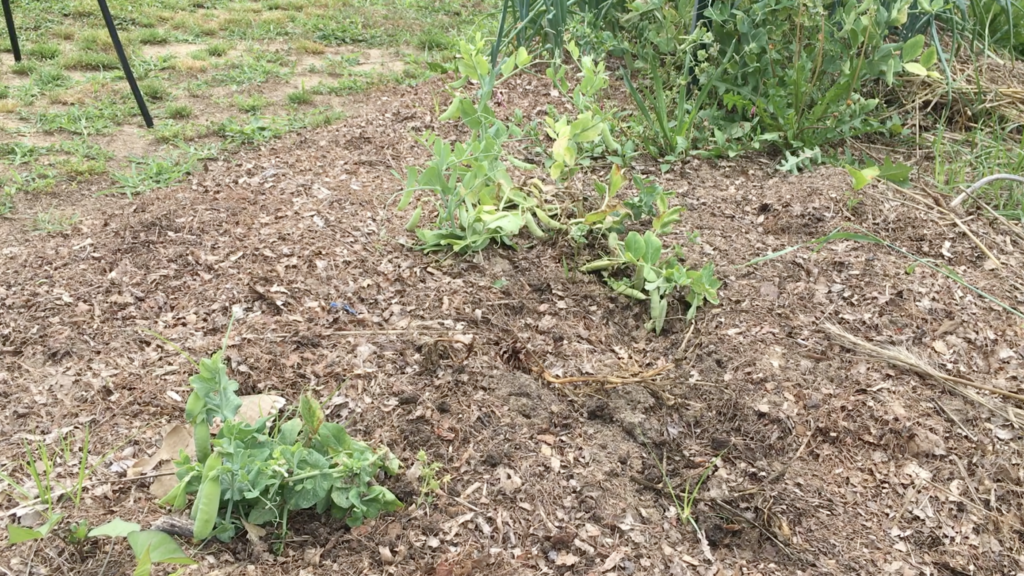
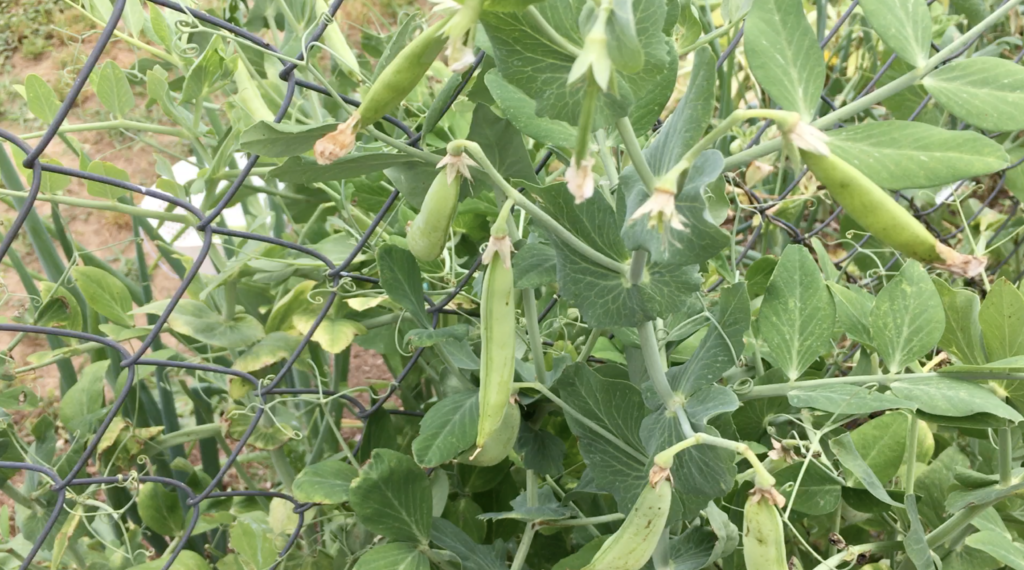
We love fresh peas but here in the desert I will have to envy all of you and drool until winter. My experience in the past has been awesome with vines climbing to 8 feet so I had to ask my husband to bring a stepladder for picking. Due to back problems (me) he kindly built me a beautiful keyhole raised bed last fall and I looked forward to raising some delicious winter crops. Unfortunately, the organic garden soil we purchased in bulk, hauled home, and shoveled in place had some of that nasty herbicide residue in it. ALL of my seedlings and transplants started as beautiful healthy plants but as they spread their roots into the soil, they became sickly and eventually died or looked so sad that I couldn’t bear it so I cut them off. Now, we will spend our cool summer mornings digging the soil back out, discarding it and replacing it. This time I will test a bit of the soil before putting it in my raised beds.
A lesson learned…. I have never in my 40+ years of gardening had every plant die. Fortunately, we have some other small spaces around the yard that produced some lettuce, greens, and now have a few tomato transplants that I can protect through the summer.
😭 Bev – this is so heartbreaking! I’m glad you have a few small spaces to grow while you re-do the soil in the raised bed. If you have a place in the yard to put the herbicide-laden soil, you might be able to grow grass family (corn/bamboo) in it if the herbicide is one that’s used on pastures to kill broad-leaf plants. And eventually the herbicide will break down. But so frustrating that a company sold you “organic soil” that was anything but!